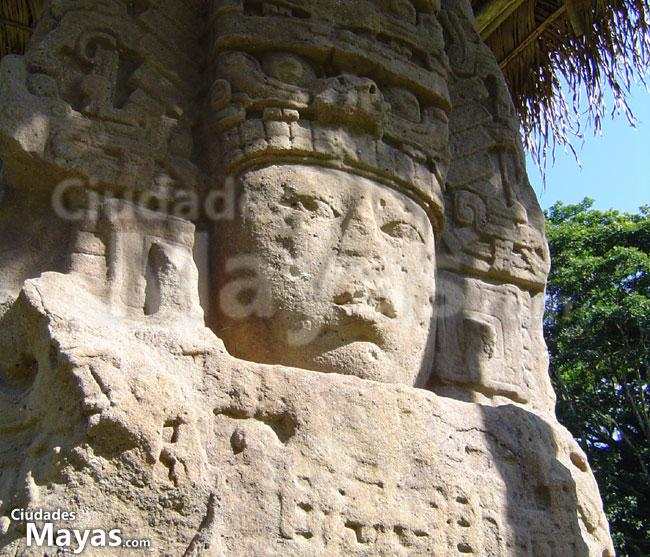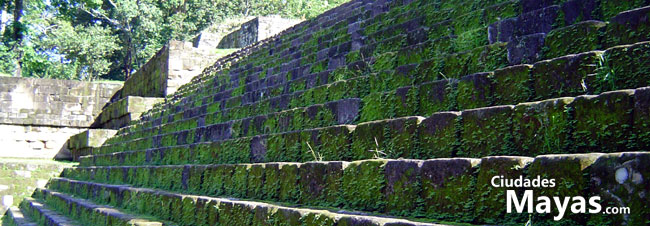Quiriguá maya site
09 de Octubre 2015
This ancient Mayan city is distinguished by its abundance of stelas, its social and economic growth, benefits are derived from the nearby Motagua River, which is navigable, allowing the shipment of goods with ease. It was declared in 1981 as a World Heritage Site by Unesco, rising to the level of importance of La Antigua Guatemala and Tikal, both also World Heritage Sites in Guatemala.
It is an Ancient Mayan acropolis characterized by economic activity and huge stelae of up to several meters. It is a discovery of John Stephens in1840. This city started during the Classic Period of Copan, located in close neighbor with what is now territory of Honduras, with whom it shared most of its present history.
Quirigua was declared in 1981 as a World Heritage Site by Unesco, rising to the level of importance of La Antigua Guatemala and Tikal, both also a World Heritage Site. The archaeological site is distinguished by the peculiarity of its stelaes and abundance, profit is derived from the nearby Motagua River, which is navigable, allowing the shipment of goods enter with ease and thus contributed to the prosperity of the place.

The sandstone which is found around the site provided them with creative work, as these hugeblocks came to be sculpted. The contact with air harden and formed part of the honoring masters and heads of the acropolis.

Notable among the stelae classified is "Stelae E", which honors Cauac Heaven with his own image and reaches 12 meters in length. It is the largest known trail. This dimension required strength and weightt o erect, so that only eight meters are above-ground while the rest remains buried three meters.
This trail is part of a complex A, C, D, E, F, H and J, all honored with his image of the same chief lord Cauac Heaven. This freed the city of Quirigua from its neighbor Copan, around 737, takinga prisoner to Eighteen Conejo (king neighbor) and ordered a beheading.
Cauac was characterized by its adherence to the stelae, which flourished during his reign and his son, Sky Xul, heir to the throne, also prolonged the sculpting of more monuments.

The rulers that have been identified are:
Cauac Sky, who shaped the greatest monuments square, reaching 150 meters x 300 meters. Cauac's Sky death was followed by the ruler called Sky Xul,reigning for 11 years, and who is alleged to be the son of Cauac Sky. Dog Imix followed with a 5-year reign, a period as short as his successor, Scroll Sky, who remains in power for a short 5 years.
Jade Sky, the next successor, was characterized by renewed construction work at Quirigua, reigning for 5 years or more. In this period where the expansion was stopped by probable architectural governance problems or death of the ruler.
John Stephens expressed great interest in the city, trying to bring the stelaes to New York but failed in his attempt to acquire ownership of the land.
Excavations were conducted between 1881 and 1894 and soon after much of the surrounding land became property of the United Fruit Company. It was in 1930 that the University of Pennsylvania resumed the work of restoration.
The buildings show that in time they were using materials more and more distant from the center of the city, for example, early indications using sediment and pebbles from the Motagua River, later identifying the use of blocks of rhyolite, then sandstone and finally marble.
This suggests that it required a further development of more labor time. The variants that are recognized in the architecture, according to techniques reveal a sequence of four distinct phases in the acropolis.

Phase 4
This activity is recognized as the most original of the 550 to750 AD, using sediment and pebbles to shape three structures around a central plaza.
Phase 3
Data from 720 to 740 D.C. and shows a more refined technique, using blocks of rhyolite, giving shape to a football field. Additionally a building south of the square was turned into a new one with many divisions to form quarters, known as1B-2 structure.
The initial football field is buried, under a new construction and to create a new field in the north of the city.
Phase 1
It is defined as the last phase of construction, 810 to 850 AD using marble construction and new material.
This phase is characterized by reconstruction and a new platform on two old buildings that become part of its base (buried).
In the north is the structure 1B-5 as the largest, decorated with stucco.
At present to get to Quirigua the traveler is still surrounded by banana plantations, but Quirigua remains an important archeological site open to visitors. The location makes it an island of history. Tourist hotels and infrastructure are being built there.
The stelas have endured over the years with considerable acceptance and today for its preservation, are placed under structures that protect them. The complex is distributed from the entrance, surrounding itself with stela and zoomorphic structures representing turtles, frogs, and snakes and Jaguar, then meets with the Great Plaza, same as above to the Acropolis, and South Eastern Group.

End of Quirigua
One begins to see a decline and suspension in the expansion and construction during the reign (end of reign) Jade Sky. There are many factors involved and speculates on the strong effect of an earthquake, and indeed, it is clear the reconstruction and strengthening of various structures have been made.
It is during the quake of 1976 that it becomes clear that the city is part of the Motagua fault, although much remains to be resolved, because the city ceased to be a major focus, there are signs of having been occupied even during Postclassic period.
The first thing to notice is the abundance of mosquitoes by the warm, humid climate. We recommend the use of repellent in advance and asecond application before entering. Foreigners will find typical fabrics, hammocks and coconuts at the entrance near the parking lot.
To reach Quirigua from Guatemala City
Take the Road to the Atlantic to Izabal. After approximately 65 kilometers from Rio Hondo one will see the sign marking the archaeological site road detour to the right.
This road continues for a few minutes to reach the entrance, which is above some banana plantations. As a suggestion to combat heat it is recommended to drink cane juice, as it is abundant in the region, if one wants to avoid the coconut water and natural drinks.
Similarly, in the diversion and at the entrance you can buy soft drinks and pure water. Quirigua in itself is an interesting place to visit if you are on your way to Izabal or if you come to the capital this way.
Publicaciones relacionadas:
- Sitio arqueológico Ixkún
- Ixkún: Museo Regional del Sureste de Petén
- Iximché en Tecpán
- Ceibal en Petén
- Yaxhá in Petén
- Kaminal Juyú
- Yaxhá en Petén
- Abaj Takalik en Retalhuleu
- Aguateca en Petén en el área del Petexbatún
- Tikal Ciudad de las Voces
- Topoxté en Petén
- Zaculeu en Huehuetenango
- Cancuén en Petén
- Ixlú en Petén
- Gumarkaaj Utatlán en Quiché
- Uaxactún en Petén
- Ruinas de Mixco Viejo
- Quiriguá en Izabal
- Machaquilá
- Nakum en Petén
Lee más publicaciones de:
Arqueología Guatemala
